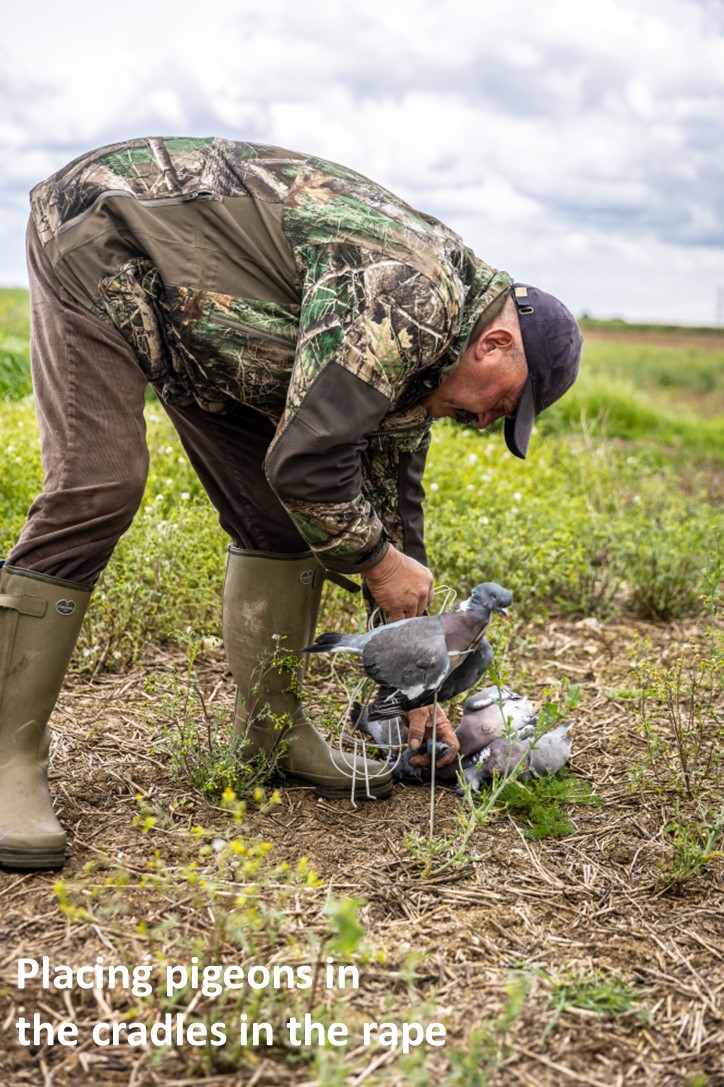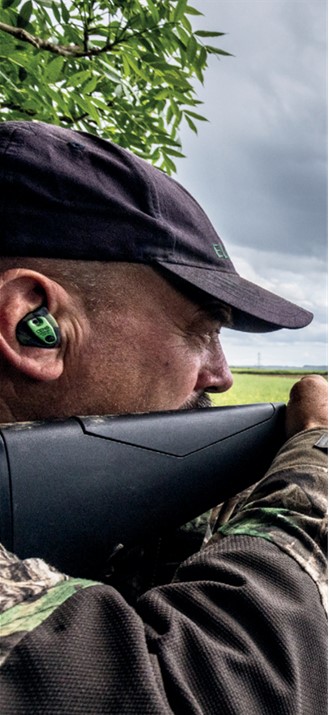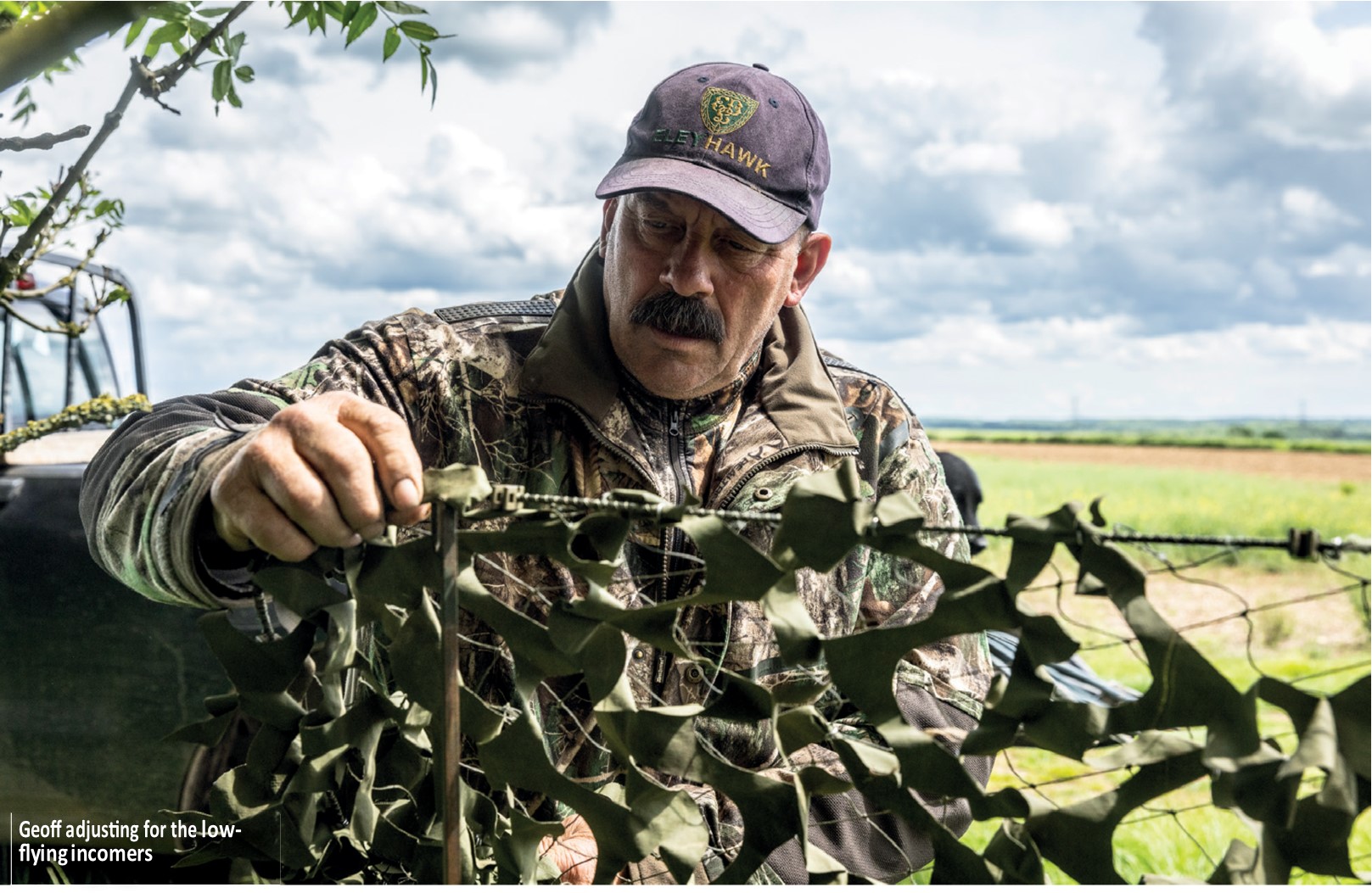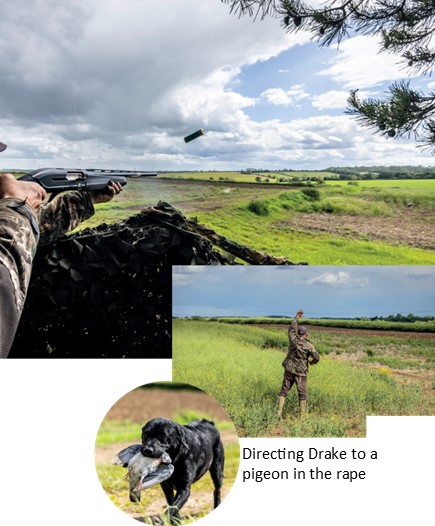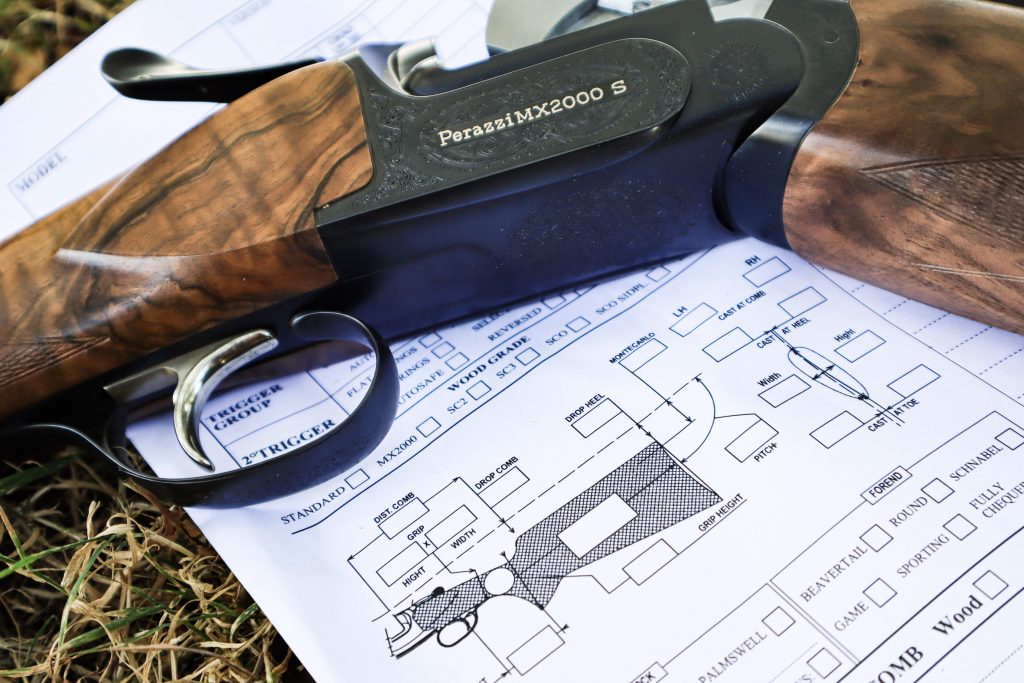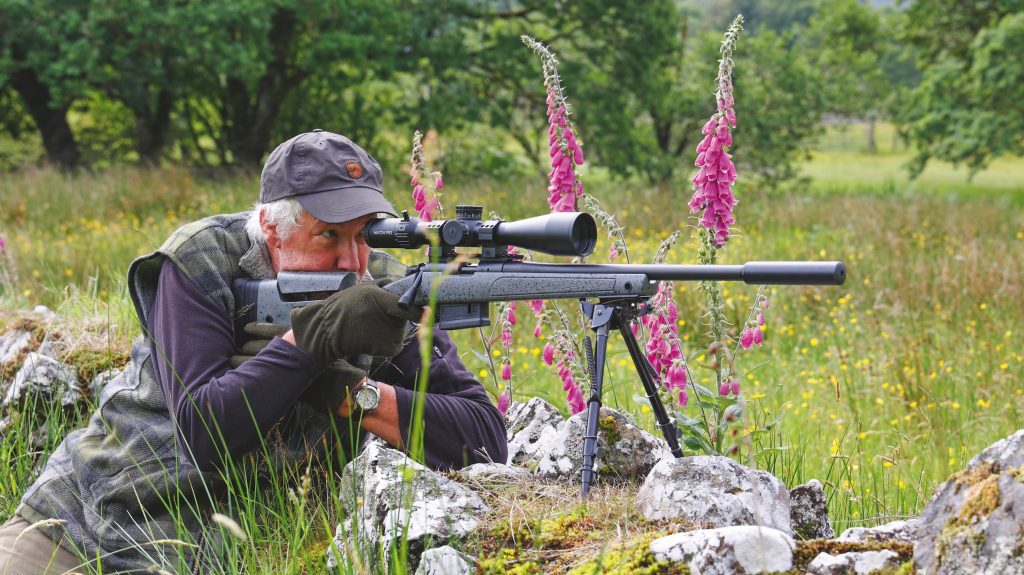Final day on the rape fields
Employing decoys and strategic positioning, Geoff Garrod recounts a day of mixed weather and unexpected pigeon behaviour
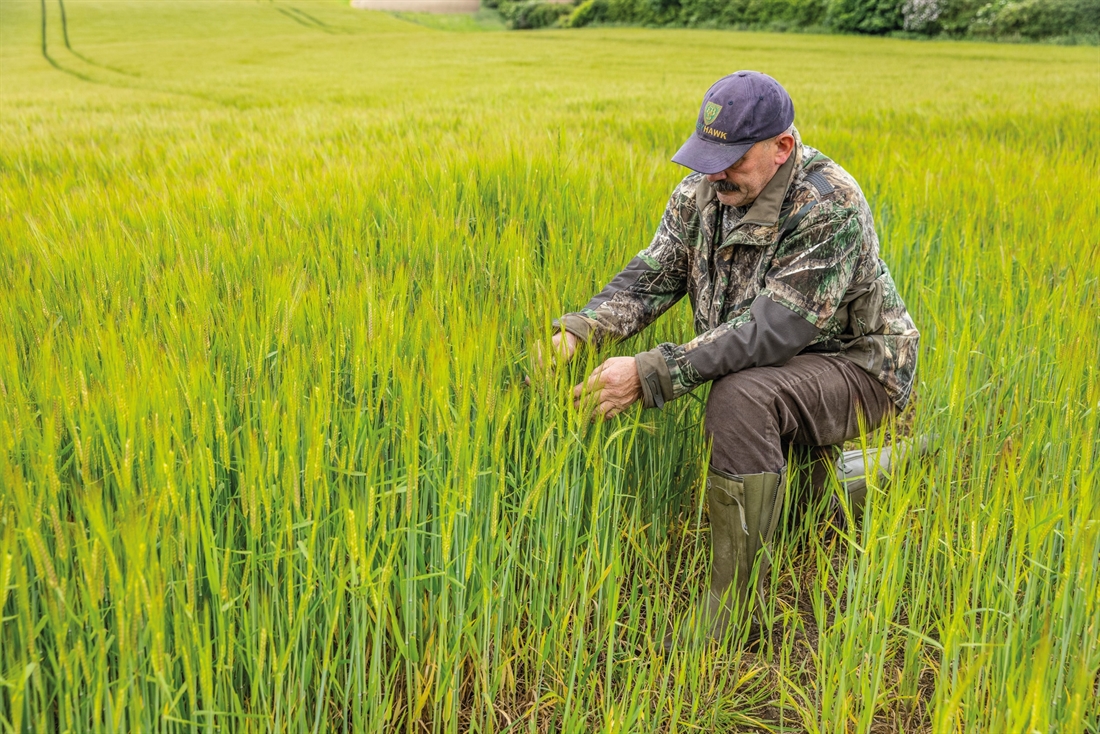
Well, I’m back in the hide again.
This will probably be the last of what I call the ‘winter shooting’, which is mainly over rape around here. There are a few other opportunities on other crops, but rape is the pigeon’s main winter diet.
There was a corner of a wood by some r the bare earth on the game cover strip and walking back to the rape to feed.
There’s not much for them on the cover strip – the maize went in pretty well when I drilled it as the ground was perfect when we finally had a break in the weather. It was the rape that the pigeons were intent on feeding on, so I could legally shoot them under the GL42 general licence. Gas guns had been used, but the pigeons were long past paying any attention to them, so a few hours in the hide one afternoon would be time well spent.
It was a bright windy day with intermittent heavy showers of rain, so I decided to set up the hide right on the corner of the wood under some small pine trees for a bit of shelter, just in case one of the showers came my way. Looking from the hide, the wind was blowing from right to left and I had seen pigeons arriving to the wood from multiple directions. They were then dropping in to feed on the patch of rape in front of the planned hide location.
I had a dozen or so real pigeons to use as decoys and I set them out in two small groups. One was just to my left and I placed the birds directly on the open ground so that they would be easily visible to pigeons arriving from my left. I placed the others in cradles to the right of the hide, where the rape crop was standing a bit taller. Whatever direction birds arrived from, they should easily spot the decoys and, with any luck, come to join them.
The moment I settled into the hide with my dog, Drake, and got comfortable it started to pour. There was blue sky nearby and it was obviously just one of those heavy spring showers, so I decided to sit it out in the truck. It was about 15 minutes before the rain moved on and the sun came out.
The pigeons I had pushed off the rape field when I arrived soon felt confident enough to return to feed again. The first arrival took me completely by surprise as it swooped in over the hide from the wood behind at low-level and landed about 20m straight in front of me. I wasn’t expecting to see anything come to the decoys from that direction as the wind was blowing right to left in front of me, and this was a tricky manoeuvre by the pigeon. They usually do a circuit of the decoys to get an angle to land into the wind.
It was on the ground well before I could get the safety catch off and the gun in my shoulder, so I had no option but to shoot it where it stood. I know some people frown on shooting birds on the ground, but it’s crop protection first and sport second for me. I always prefer to shoot pigeons in flight, but this was simply one bird that wouldn’t be damaging the crop tomorrow.
From the hide I could see over about 200 acres of winter barley fields in the distance. It has shot up in the past couple of weeks and the heads of corn are starting to form well.
It won’t be long before it starts to get the attention of the pigeons and with the passing storms, if a strong enough wind blows when the crop is wet we’ll end up with laid patches in the fields.
It’s fairly light ground here, so we don’t get the vast swathes of damage that some areas have, but we do get the odd patch. They mostly occur where there is a bit of marshy ground, or where the tramlines overlap or in the headland areas. Anywhere that the wind can get among the crop. If one stalk is heavy with the rain on it and snaps, a whole patch goes over like dominoes. That can make for some fantastic shooting, for the obvious reason that the fallen area of crop focuses where the birds can land. Place some decoys in the flattened crop and sometimes you’ll have a bonanza day.
Another option the pigeons have is the fields of clover we have in one of our schemes. It classes as a crop and I’ll be keeping my eyes open for opportunities
there. That probably could be classed as the beginning of the summer shooting and I can’t wait.
As for the decoying, so far this year it’s been a mixed bag. Early on we had some great days when pigeons were flighting between rape and maize, but around here it seems that the huge numbers of pigeons we had early on have dwindled a little.
I have also noticed how difficult it has been to get any birds to decoy really well. They have tended to head for my decoys and then swing by just out of range. It’s really frustrating and I’m sure they’re not seeing me or anything odd in the patterns, as they just drift away and don’t jink suddenly as they do if they spot danger. Even on my favourite spring drilling, which is usually a great time to get birds in the bag, the pigeons just seemed uninterested until late afternoon and then there would be a last- minute rush. They have all seemed to fly very high this year too, even on windy days. It’s all very odd and I hope it changes soon.
As it turned out, this particular day was the exact opposite of what I’d been experiencing over the year with high-flying pigeons.
Most of the birds that decoyed to my pattern had flown across the field no more than 3m off the ground. They were catching me out a bit as I have become accustomed to having my hide poles and netting set at the height of the brim of my cap.
Some of the pigeons were so low that I just wasn’t spotting them until they were upon the decoys.
A small adjustment soon put that problem in order and it turned into a nice few hours out with my gun. Most of the pigeons I saw that afternoon came and decoyed beautifully and I started to make a reasonable bag. My shot-to-bird ratio was a vast improvement on the last few months because I wasn’t having to shoot at all at the 50m-plus crossers I’ve been getting this year.
I shot a couple of long-range birds, but the majority were about 25m away and very killable when they committed to the decoys.
There was a tricky flight-line that appeared behind me and I had a few shots in that direction to try and break the line, but to no avail. It wasn’t really a problem though, as most of the pigeons decoying were coming up the hill from the opposite direction.
What was starting to be a problem was the far corner of the field along the side of the wood. Pigeons started to trickle into the field from the wood and drop in to feed. The trickle started to build until it was a flood of birds. The corner they were dropping into was bordered by the garden of one of the houses near the farm to my right. There was no chance that I could pick up sticks and move down there, however tempting the situation looked.
It wasn’t too long before the flight line that had been coming up the hill towards me shifted to cut off my shooting. It was late in the afternoon by then and I’d had a good few hours, so I packed up. I wasn’t disappointed with the day and it was clear that it was over for the decoying that evening.
If I were a betting man, I think my next day out decoying will be on one of the clover fields, unless anything else presents itself. I’ll keep you all posted.




